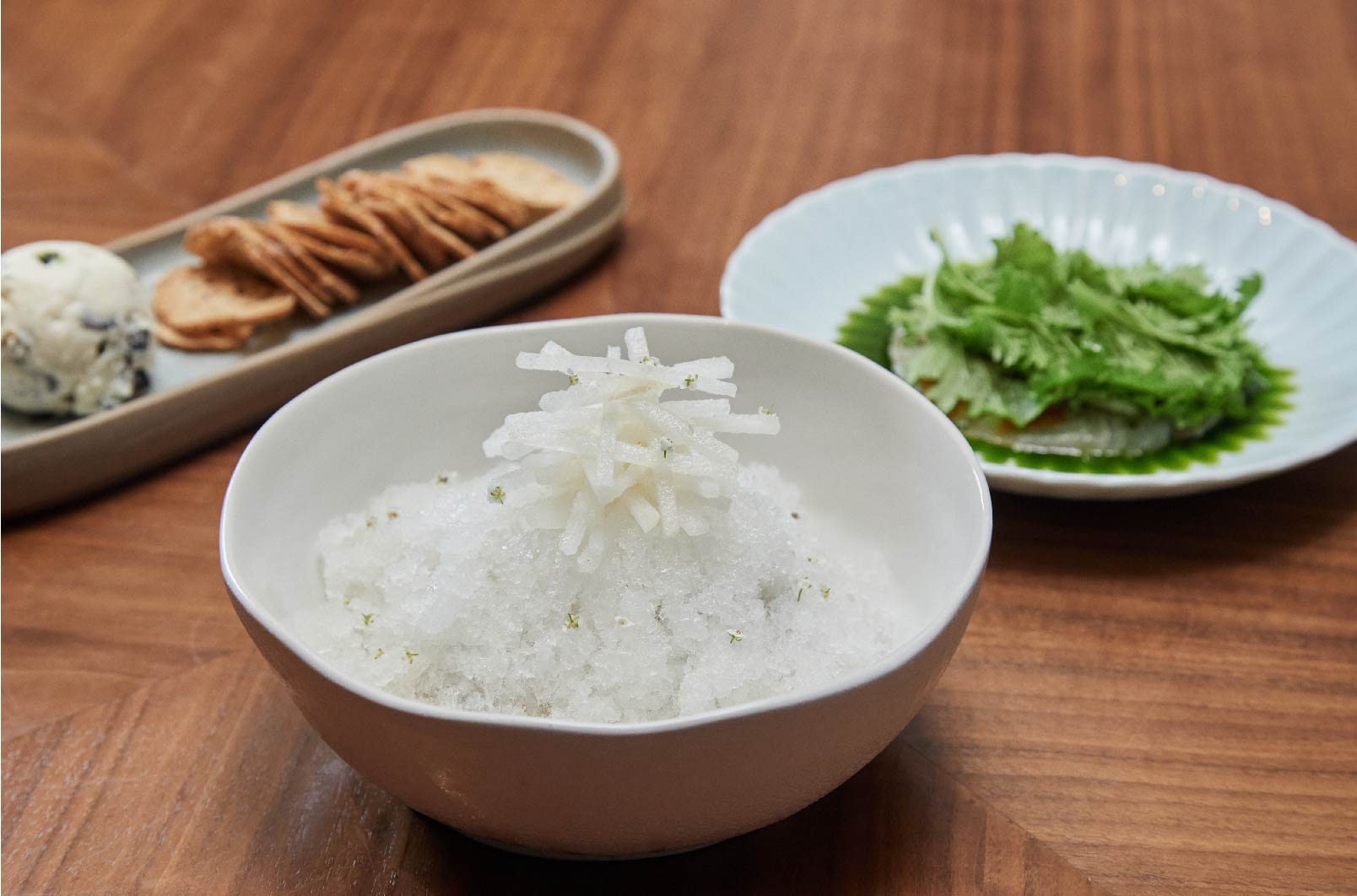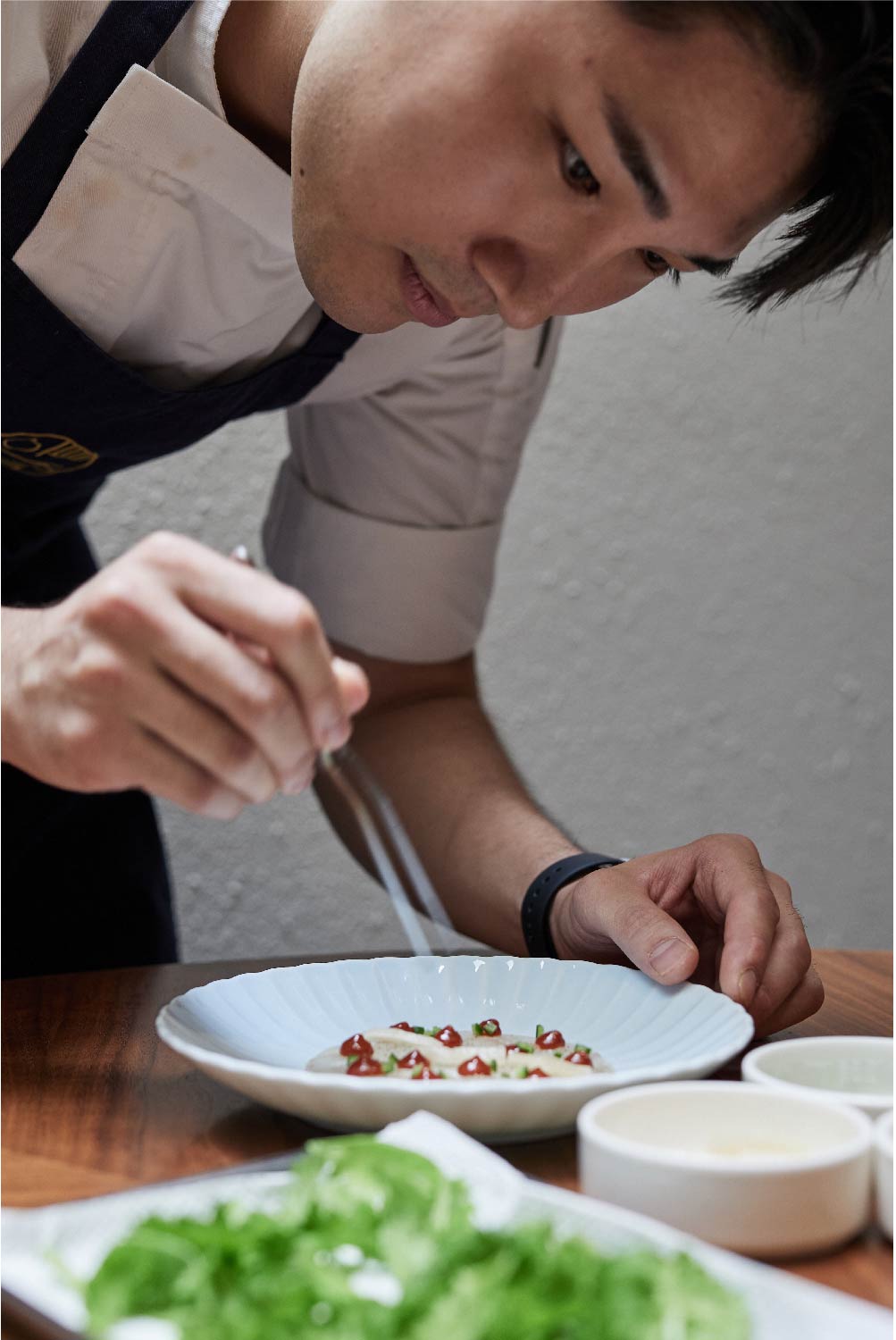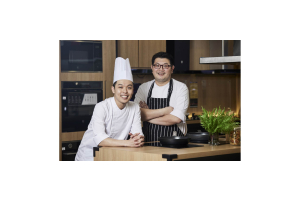Reimagining Korean Cuisine with Chef Kim
At just 29 years old, up-and-coming Korean chef Kim Younghoon is determined to reshape the landscape of Korean cuisine. Having previously worked at the prestigious 2 Michelinstarred restaurant JAAN by Kirk Westaway, he now spearheads his mission as head chef at ANJU, Tras Street’s latest culinary phenomenon.
It was during the peak of the COVID-19 wave that Chef Kim came to know of an opening at ANJU. He was taking some time off in Korea and was contemplating his next culinary venture. That downtime was the perfect opportunity for him to reinvent Korean cuisine on his own terms. Fast-forward to today, he delivers a bespoke menu that is both revolutionary and novel.
When did you realise that cooking would be your chosen profession?
Funnily enough, I had always assumed that I would pursue a career in sports in my early years. It was through the encouragement of a teacher that I enlisted in a cooking school where I really thrived as a budding chef. I would receive full marks for my cooking exams and receive various certifications purelystemming from my culinary intrigues. Becoming a chef seemed like the most natural pathway after my graduation.
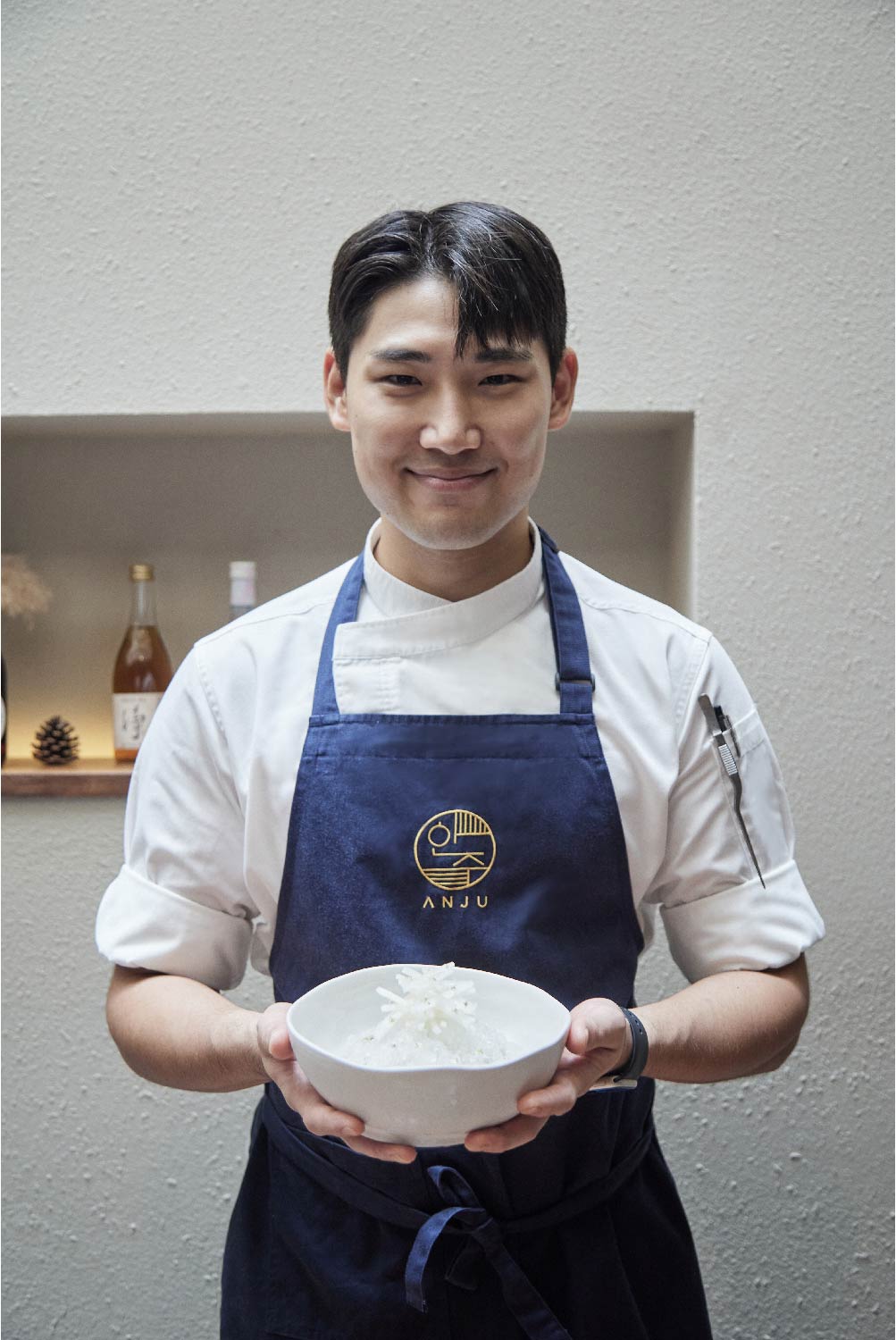

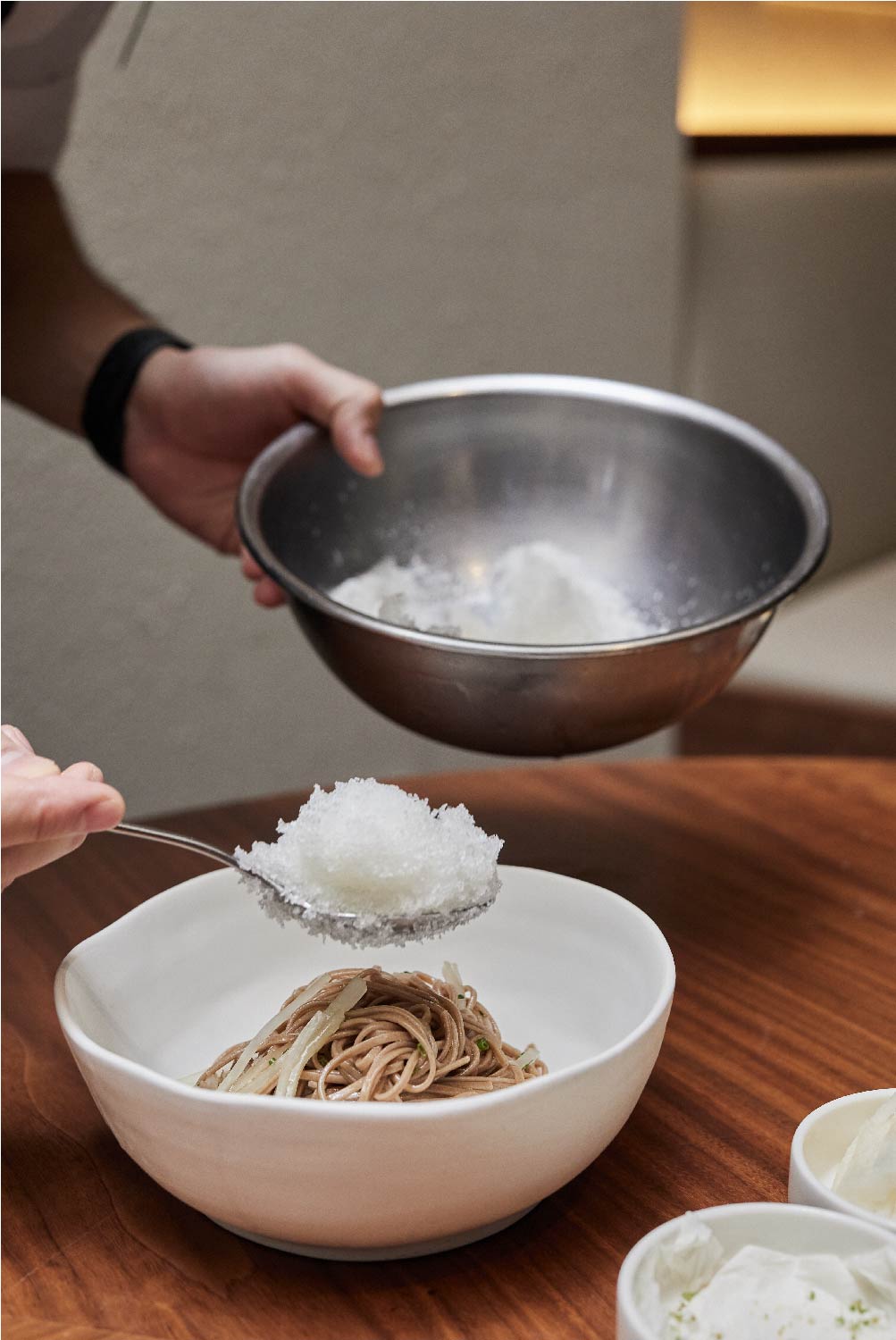

Do you remember your very first stint at professional cooking? What was it like?
It was a buffet restaurant operated by a huge busines conglomerate! The adage “trial by fire” probably best describes my experience there. Just imagine – 300 hungry diners every day that were to be fed by only five chefs, including myself. The kitchen was a chaotic battlefield, but I loved every second of it.
Since then, you have worked with venerable chefs such as 2 Michelin-starred Chef Kirk Westaway at JAAN. How did your time there shape your impression of fine dining?
Fine dining essentially is synonymous with putting art on a plate. It is a multi-dimensional side of cooking that underscores not just the dish’s sensory profiles, but also its cooking methodologies and aesthetic highlights. It forces you to pay attention to the minutiae of its presentation, such as its plating and colours so that diners can live vicariously through the dish. I’m truly grateful to have had the opportunity to be mentored by the great Kirk Westaway, for it is his teachings that have shaped my creative aspirations at ANJU.
What is it about Korean cuisine that makes it so unique and fresh?
The heart of Korean food lies in the diversity of its ingredients, especially those that are seasonal. Flavours are often very neat, clean, and yet layered through a multitude of cooking styles like fermentation! It is funny that many Singaporeans assume Korean barbecue to be the face of the cuisine. While it is a variant of Korean food, it is just a facet of our diverse culinary ecosystem.
At ANJU, there is a strong focus on the interplay between food and drinks. Why is it so?
ANJU loosely translates to food that is consumed with alcohol. Enjoying alcohol with food is quintessential in Korea as we believe the pairing brings out a whole new dimension and nuance to Korean flavours.
You mentioned that some of your dishes pay tribute to your grandmother, such as your Abalone Gim Pasta at ANJU. Tell us more about this.
I love and adore my grandmother’s Bibim Guksu – a spicy mix of noodles and seaweed. It is always special when my grandmother prepares it, as you can taste her heart and soul in this dish. My Abalone Gim Pasta, alongside my other dishes, evokes the love my grandmother put in her food for the people she loved.
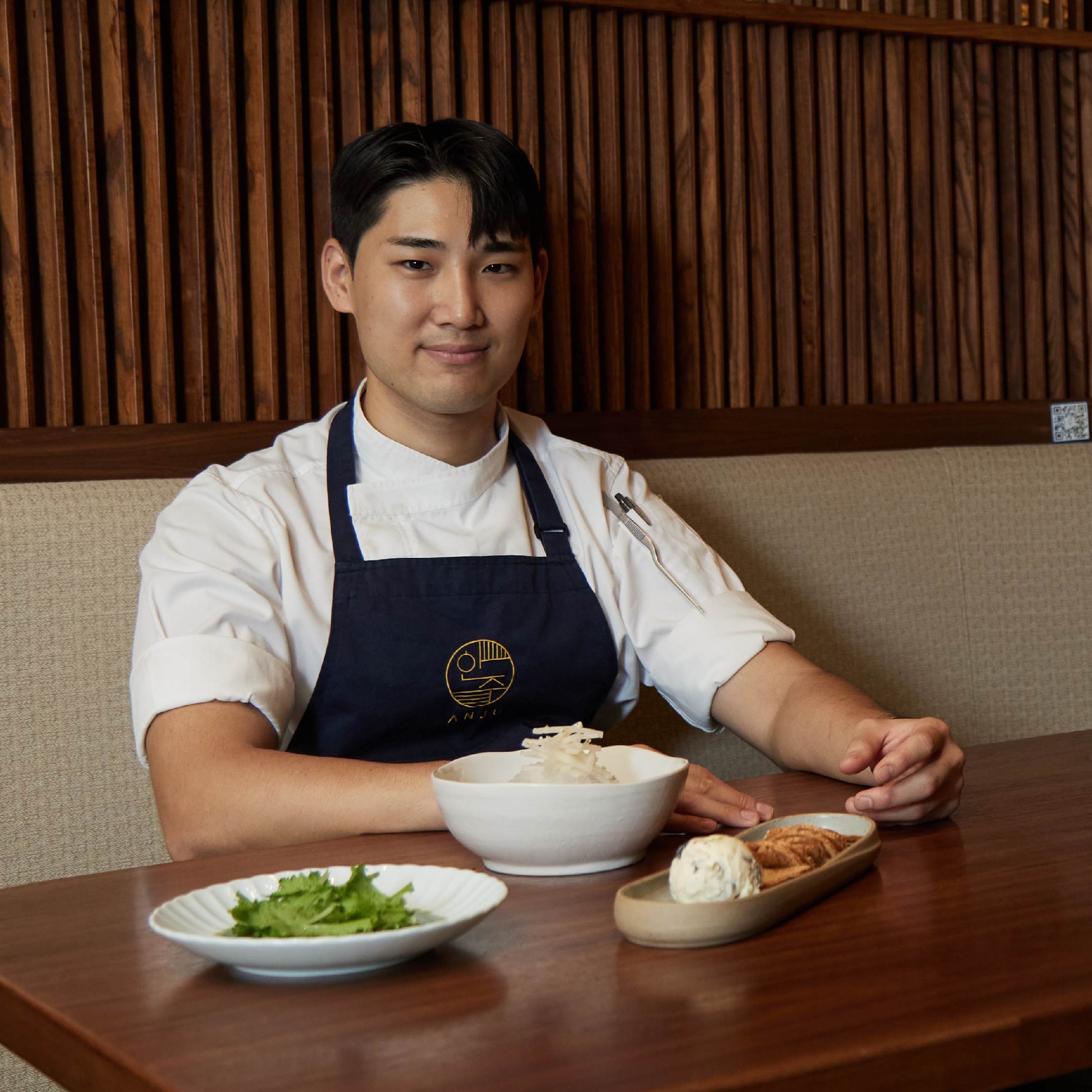

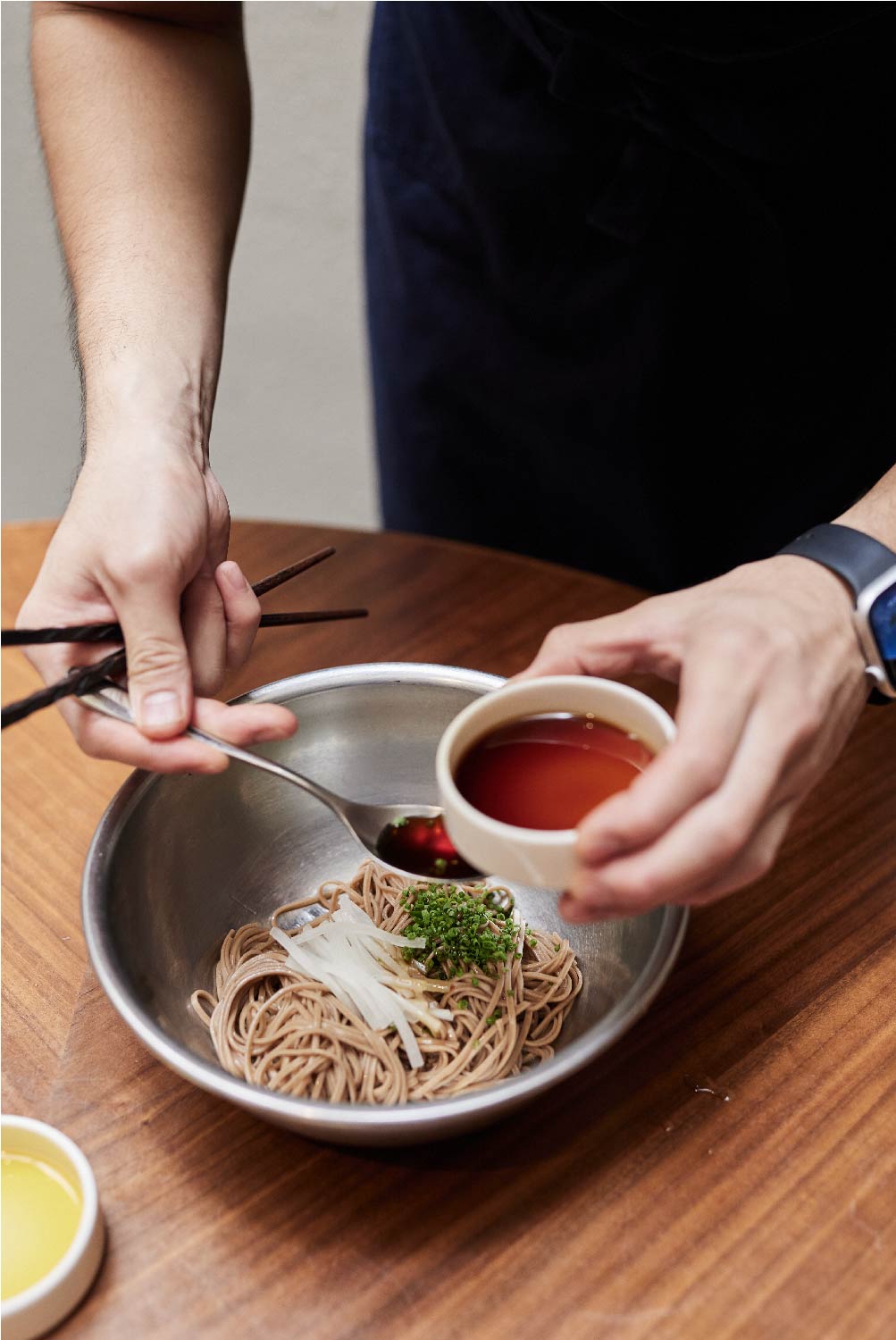

What is a dish that is easy to make, but incredibly difficult to master?
The ever-renowned kimchi! It really is a challenge to one’s intuition and eye for details. My grandmother would make over 100 batches of kimchi every winter and I was always there with her as an assistant. She has done it for so long that she could measure her ingredients just by a single look, and still have her kimchi magically sapid. I have personally made and served kimchi at ANJU for over two years, and I think I still have a long way to go before I can emulate my grandmother’s perfect kimchi. But I’m getting closer every day, for sure!
What’s a simple tip for home cooks to help them elevate their cooking?
Always pay attention to your seasoning. A good balance of the right seasoning takes your dish to the next level! I love that Korean cuisine inherently embraces organic flavours and aromatics to enrich the dish, and that just a few dashes of salt and sesame oil is enough to complete it. Creating delicious food will always be a challenge if you do not get your seasonings right!
Tell us about the recipe you’ll be sharing today.
Dongchimi Guksu is a cooling dish that incorporates Dongchimi, a radish-type kimchi that is often enjoyed as a side dish with rice during winter or made into a chilled broth that is mixed with noodles. It can even be consumed as a refreshing beverage! My take on Dongchimi emphasises its cooling properties, which I’m sure is very much welcomed in Singapore’s tropical climate.
DONGCHIMI KIMCHI (SHAVE ICE BROTH)
Ingredients:
1.5kg Daikon
2 Green Chillies
200g Pear
100g Onion
10g Ginger
30g Garlic
100g Spring Onions
102g Plain Flour
105g Korean Sea Salt
1 Infuse the daikon with salt and 400g of water. Let it rest for 2-3 hours (depending on radish size).
2 Mix the flour with water until it forms a paste.
3 Blend the pear, ginger, and onion with water.
4 Combine this mixture with 3L of water (including the salted water in Step 1), sugar, and the flour paste. Mix well. Add in the daikon, spring onion, and green chillies after.
5 Leave it outside for two days to ferment.
SOBA
Ingredients:
70g Buckwheat Noodles
30g Shredded Daikon(from the dongchimi kimchi)
5g Chives
6g Korean Soy Sauce
6g Tuna Fish Sauce
15g Perilla Oil
30g Korean Pear
1 Freeze the dongchimi water.
2 Cook the buckwheat noodles in boiling water for 4 minutes. Wash the cooked noodles with iced water thereafter.
3 Mix all the other ingredients in a bowl (tuna fish sauce, soy sauce, perilla oil, chives, and the dongchimi kimchi.)
4 Combine this mixture with the noodles. Add in the iced dongchimi broth.
5 Garnish with Korean pear.
